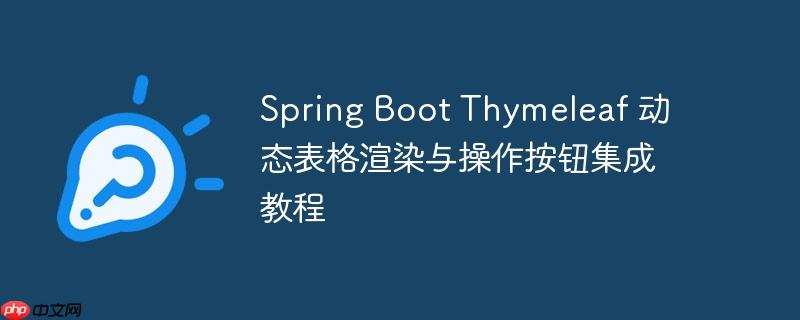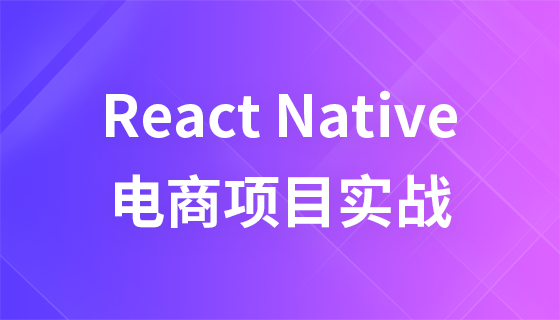
在Web应用开发中,动态展示列表数据并为每条数据提供交互功能(如编辑、删除)是常见需求。Spring Boot结合Thymeleaf提供了一种简洁高效的解决方案。然而,在实现过程中,开发者有时会遇到循环嵌套不当导致操作按钮重复生成的问题。本教程将深入探讨如何正确地使用Thymeleaf的th:each属性,实现每行数据对应一个操作按钮的动态表格。
原始问题中,开发者尝试通过分别迭代descriptionList和idList来填充表格列,并在一个嵌套的th:each中为idList生成删除按钮。这种做法的问题在于:
正确的做法是,将每行相关的数据封装成一个独立的Java对象,然后迭代这个对象列表。
为了解决上述问题,核心思想是将同一行的数据封装到一个Java对象中。这样,我们只需对这个对象列表进行一次迭代,即可访问每行的所有相关数据。
首先,创建一个Java类来表示表格中的每一行数据。例如,我们可以定义一个WishItem(或User,如原始答案所示)类,包含ID、描述(或邮箱)等属性。
// src/main/java/com/example/demo/model/WishItem.java
package com.example.demo.model;
public class WishItem {
private Long id;
private String description; // 或者 email
// 其他可能需要的属性
public WishItem(Long id, String description) {
this.id = id;
this.description = description;
}
// Getters and Setters
public Long getId() {
return id;
}
public void setId(Long id) {
this.id = id;
}
public String getDescription() {
return description;
}
public void setDescription(String description) {
this.description = description;
}
// 实际项目中可能还需要equals(), hashCode(), toString()
}在Spring Controller中,我们需要创建WishItem对象的列表,并将其添加到Model中,以便Thymeleaf模板可以访问。
// src/main/java/com/example/demo/controller/WishController.java
package com.example.demo.controller;
import com.example.demo.model.WishItem;
import org.springframework.stereotype.Controller;
import org.springframework.ui.Model;
import org.springframework.web.bind.annotation.GetMapping;
import org.springframework.web.bind.annotation.PostMapping;
import org.springframework.web.bind.annotation.RequestParam;
import java.util.ArrayList;
import java.util.List;
@Controller
public class WishController {
// 模拟数据存储
private List<WishItem> wishItems = new ArrayList<>();
public WishController() {
// 初始化一些模拟数据
wishItems.add(new WishItem(1L, "购买新电脑"));
wishItems.add(new WishItem(2L, "学习Spring Boot"));
wishItems.add(new WishItem(3L, "旅行计划"));
}
@GetMapping("/wishlist")
public String showWishList(Model model) {
model.addAttribute("wishItems", wishItems);
// 假设 email 是从用户会话或认证信息中获取
model.addAttribute("userEmail", "user@example.com");
return "wishlist"; // 返回 Thymeleaf 模板名称
}
@PostMapping("/deletewish")
public String deleteWish(@RequestParam("wish_id") Long wishId,
@RequestParam("email") String email) {
// 实际应用中需要验证 email 和 wishId 的关联性
wishItems.removeIf(item -> item.getId().equals(wishId));
System.out.println("删除愿望 ID: " + wishId + ", 用户邮箱: " + email);
return "redirect:/wishlist"; // 重定向回列表页面
}
}在Thymeleaf HTML模板中,使用th:each属性迭代wishItems列表。对于列表中的每一个WishItem对象,生成一个<tr>,并在其内部访问WishItem的属性来填充<td>。
<!-- src/main/resources/templates/wishlist.html -->
<!DOCTYPE html>
<html lang="zh" xmlns:th="http://www.thymeleaf.org">
<head>
<meta charset="UTF-8">
<title>我的愿望清单</title>
<style>
table {
width: 80%;
border-collapse: collapse;
margin: 20px 0;
}
th, td {
border: 1px solid #ddd;
padding: 8px;
text-align: left;
}
th {
background-color: #f2f2f2;
}
button {
padding: 5px 10px;
background-color: #dc3545;
color: white;
border: none;
border-radius: 4px;
cursor: pointer;
}
button:hover {
background-color: #c82333;
}
</style>
</head>
<body>
<h1>我的愿望清单</h1>
<table>
<thead>
<tr>
<th>ID</th>
<th>描述</th>
<th>操作</th>
</tr>
</thead>
<tbody>
<!-- 使用 th:block 或直接在 tr 上循环 -->
<th:block th:each="item : ${wishItems}">
<tr>
<td th:text="${item.id}">1</td>
<td th:text="${item.description}">购买新电脑</td>
<td>
<form th:action="@{/deletewish}" method="post">
<!-- 传递当前愿望的ID作为隐藏字段 -->
<input type="hidden" name="wish_id" th:value="${item.id}">
<!-- 传递用户邮箱,如果需要 -->
<input type="hidden" name="email" th:value="${userEmail}">
<button type="submit">删除</button>
</form>
</td>
</tr>
</th:block>
</tbody>
</table>
<p>当前用户邮箱: <span th:text="${userEmail}">user@example.com</span></p>
</body>
</html>在上述Thymeleaf代码中:
通过本教程,我们学习了如何在Spring Boot和Thymeleaf中正确地实现动态表格的渲染,并为每行数据添加独立的操作按钮。关键在于构建统一的数据模型,并在Thymeleaf模板中使用单次th:each循环迭代这个模型列表。这种方法不仅解决了按钮重复生成的问题,也使代码更加清晰、易于维护,是构建功能完善的Web应用的重要一步。
以上就是Spring Boot Thymeleaf 动态表格渲染与操作按钮集成教程的详细内容,更多请关注php中文网其它相关文章!

每个人都需要一台速度更快、更稳定的 PC。随着时间的推移,垃圾文件、旧注册表数据和不必要的后台进程会占用资源并降低性能。幸运的是,许多工具可以让 Windows 保持平稳运行。




Copyright 2014-2025 https://www.php.cn/ All Rights Reserved | php.cn | 湘ICP备2023035733号